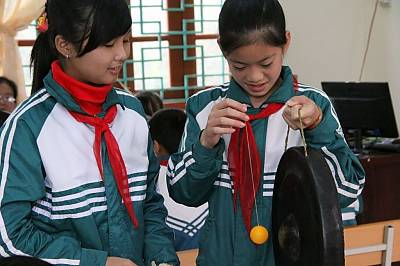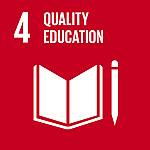
© UNESCO / VME
The goal of the side event is to raise awareness of the new programme on ‘Safeguarding intangible cultural heritage in formal and non-formal education’. Speakers will share recent experiences on integrating intangible cultural heritage in education, discuss challenges and look at future possibilities.
‘Safeguarding intangible cultural heritage in formal and non-formal education’ was adopted as a new funding priority for the Secretariat at the twelfth session of the Intergovernmental Committee for the Safeguarding of the Intangible Cultural Heritage. The new priority has laid the foundation for future work and support is now needed for concrete action on the ground.
Education can play a valuable role in safeguarding intangible cultural heritage. This is why the 2003 Convention for the Safeguarding of the Intangible Cultural Heritage includes a reference to ‘transmission, particularly through formal and non-formal education’, as part of the proposed safeguarding measures (Article 2.3). The Convention calls on States Parties to ‘ensure recognition of, respect for, and enhancement of the intangible cultural heritage in society’ through education programmes (Article 14). Similarly, the 2030 Agenda for Sustainable Development advocates ‘promotion of a culture of peace and non-violence, global citizenship and appreciation of cultural diversity and of culture’s contribution to sustainable development’ as an important target to achieve Goal 4 on quality education and lifelong learning opportunities for all.

Intangible cultural heritage can provide context-specific content and pedagogy for education programmes and thus act as a leverage to increase the relevance of education and improve learning outcomes. In this regard, intangible cultural heritage is an incredibly rich resource, which is why UNESCO promotes learning and teaching through and about intangible cultural heritage in education programmes in all relevant disciplines. For instance, through TVET institutions, young people and adults can harness the heritage from their communities to develop skills for employment while strengthening the practice and transmission of intangible cultural heritage.
Invited speakers
- Mr Abdoul Aziz Guissé, Director, Cultural Heritage, Ministry of Culture and Communication of Senegal
- Mr Bambang Hari Wibisono, Deputy Permanent Delegate, Permanent Delegation of the Republic of Indonesia to UNESCO
- Mr Öcal Oğuz, Chairholder, UNESCO Chair in Intangible Cultural Heritage in Formal and Informal Education and President, Turkish National Commission for UNESCO
- Ms Susanne Schnuttgen, Chief of Unit, Capacity Building and Heritage Policy, Intangible Cultural Heritage Section, UNESCO